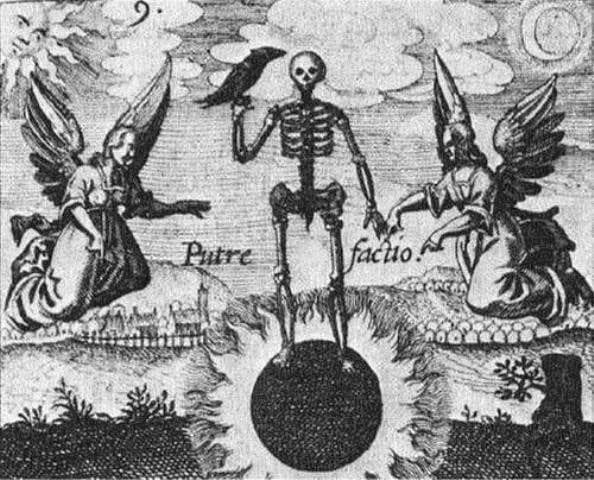
Natalia Serebrennikova
Initially, the shadow is everything that the ego-consciousness does not know about itself, the entire unconscious part of the personality. The shadow represents “a tight passage, a narrow door, whose painful constriction no one is spared who goes down to the deep well.”i As the personality develops, the shadow gradually differentiates into individual and collective one (familial, social group, cultural, archetypal).
An individual shadow is formed by repressing unacceptable personality traits, by pushing them out of ego and persona. One’s own shadow is associated with a sense of guilt and shame, as well as with a feeling of the presence of something authentic and important. An “echo”, a doppelgänger, an alter ego appears and interacts with ego in a special way. It is fascinatingly and intelligibly shown in fairy tales and myths through the motifs of twins, warring brothers, a king and a jester, a prince and a beggar, etc. The shadow contents help one feel their personal identity through pushing away the “bad,” just as ego contents create identity through the attraction to the “good.” As a person grows up, it becomes clear that what was pushed into the shadow in childhood as unacceptable and problematic for parents is necessary and appropriate in adult life – for example, aggressiveness, sexuality or talent, and the task arises to return it to the ego-consciousness in a modified form, thereby achieving greater integrity and self – realization.
A person can learn about the nature of his/her shadow from their dreams, fantasies and visions, from relationships with other people, from his/her reactions to characters from the world of art and culture. It is easier to learn about the shadow with the help of an external observer who sees both polarities of the complex – “ego and shadow” or “persona and shadow”. In dreams, the shadow is often of the same gender as the dreaming ego. Often, the shadow, which the ego does not pay due attention to, makes itself felt through a gloomy mood, psychosomatic illness or unconsciously provoked accidents.ii Both positive and negative properties that deviate from an average developed person in a given culture in a given era fall into the shadow. However, “pulling the skeleton out of the closet” turns out to be easier than getting used to the “gold” of the shadow – for example, one’s own generosity or true vocation. Rejection of higher qualities can be as destructive as not knowing the dark side of the psyche. The shadow can only be partially known; the more differentiated the ego, the more contradictory the shadow. If the ego does not project a shadow, but identifies with it, is captured by the shadow or even possessed by it, then the shadow is acted out in behavior. This happens easier in altered states of ego consciousness – fatigue, alcohol or drug intoxication. A couple relationship is also highly dependent on how partners handle their shadows. Parents often cast their shadow on their children, and such transgenerational transmission of the unlived and unconscious, including traumatic experiences, noticeably complicates the adult lives of the offspring.
Individuals tend to accumulate shadow contents, while society, on the contrary, seeks to express collective shadow contents as soon as and as fully as possible. The front page of any newspaper casts an archetypal collective shadow on our faces, and the main contents of the shadow are catastrophe and crime.iii Many artists, politicians and businessmen express the collective shadow with their eccentric behavior and extravagant creative productions. One can
also learn about the properties of the collective shadow from fairy tales or group narratives. Any society extols one side and calls it “the light”, and rejects the other naming it “dark”, depending on the system of values inherent in a given culture. For example, one culture highly values individuality, while another actively promotes self-denial and commitment to a social group.
Encountering the collective shadow leads to social upheaval – wars, economic crises, political conflicts. Usually persons (or social groups) project their shadow on others and thus force them to bear the burden of responsibility for all that is “bad”. For example, men cast their shadow on women, whites on blacks, blacks on whites, Catholics on Protestants, capitalists on communists, Muslims on Hindus, etc. In a social group, a family or an individual can become a “scapegoat”, that is, a group shadow, and they can somehow be sacrificed to a “deity” in atonement for the sins and evils of all members of the group. The bearer of the group shadow becomes a representative of another world, possesses great energy, is simultaneously feared, despised and revered. Religious and social rituals help to become aware of the contents of the collective shadow and to learn ways of coping with it. The symbolically authentic rituals include opposites, balance them and lead to their creative transcendence.
Shadow is coming about when “beneath the surface a person is suffering from a deadly boredom that makes everything seem meaningless and empty…”iv Each encounter with a shadow is an intense emotional reaction, confrontation or conflict. If shadowy energy is greater than that of the ego, it breaks through in affect or risky behavior. When having a traumatic experience, the collective shadow aspect intrudes brutally into the ego. The impact of “confrontation with the shadow produces at first a dead balance, a standstill that hampers moral decisions and makes convictions ineffective … nigredo, tenebrositas, chaos, melancholia.”v The dissolution of the persona and the launch of the individuation process also brings with it “the danger of falling victim to the shadow … the black shadow which everybody carries with him, the inferior and therefore hidden aspect of the personality”.vi
In the first half of life, social adaptation takes place, which inevitably forms a large gloomy shadow. Often, after a successfully resolved midlife crisis, deep shadow contents come to the surface and the individual lives through the unlived, his/her inner value system becomes significantly different, even opposite to the previous one. Probably, at such an intense moment, Faust (ego) met Mephistopheles (shadow), and each of them suffered and was transformed, found the ability to love and became whole.
Even if a person knows what his/her shadow is, he/she struggles to be aware of the shadow, but not identified with it. “The integration of the shadow, or the realization of the personal unconscious, marks the first stage in the analytic process … without it a recognition of anima and animus is impossible.”vii It is also impossible to integrate the shadow fully because of it being transpersonal. The integration of the shadow expands consciousness, creates new meanings and releases the energy that was previously spent on the fight against the shadow – and this is subjectively experienced as a revival of hopes or the return of the feeling of living one’s own life. The integration of the shadow also has a moral aspect: the establishment of fairer relations with oneself and others, acceptance of human limits and rejection of omnipotent perfectionism in favor of wholeness as completeness.

Natalia Serebrennikova, PhD, is a training analyst and supervisor for the Russian Society of Analytical Psychology, working in private practice since 2005. She lives and works in Vienna, and is a member of the Austrian Society of Analytical Psychology. She applies sandplay, art-therapy and narrative techniques in her clinical work, which includes personality disorders, affective disorders, multiple traumatization, psychosomatic symptoms, dissociative states of mind, or life crises. Her research interests are individual and social dreaming and how myths and cultural complexes influence a person in his/her mind- body wholeness. She has translated and edited Russian publications of many books and papers on analytical psychology and psychoanalysis.
She is also the author of numerous papers.
i Jung, C.G. 1996. The Archetypes and the Collective Unconscious. CW 9/1, London, p.21.
ii Johnson, R. A. 1993. Owning Your Own Shadow: Understanding the Dark Side of the Psyche. San Francisco: Harper.
iii Ibid.
iv von Franz, M.-L. [1964] 1978. The Process of Individuation. In Man and his Symbols, ed. by C. G. Jung. London: Picador, p.170.
v Jung, C. G. 1963. Mysterium coniunctionis. London, p.497.
vi Jung, C. G. 1954. Psychology of the Transference. CW 16. London, p. 219.
vii Jung, C. G. 1959. Aion: Researches into the Phenomenology of the Self. CW 9/2, London, p. 22.

